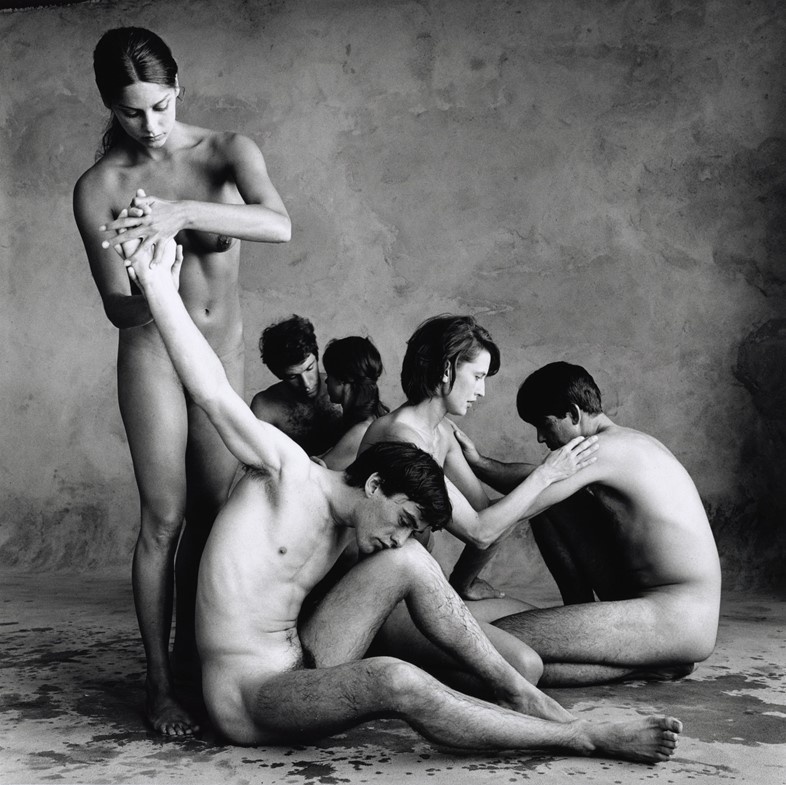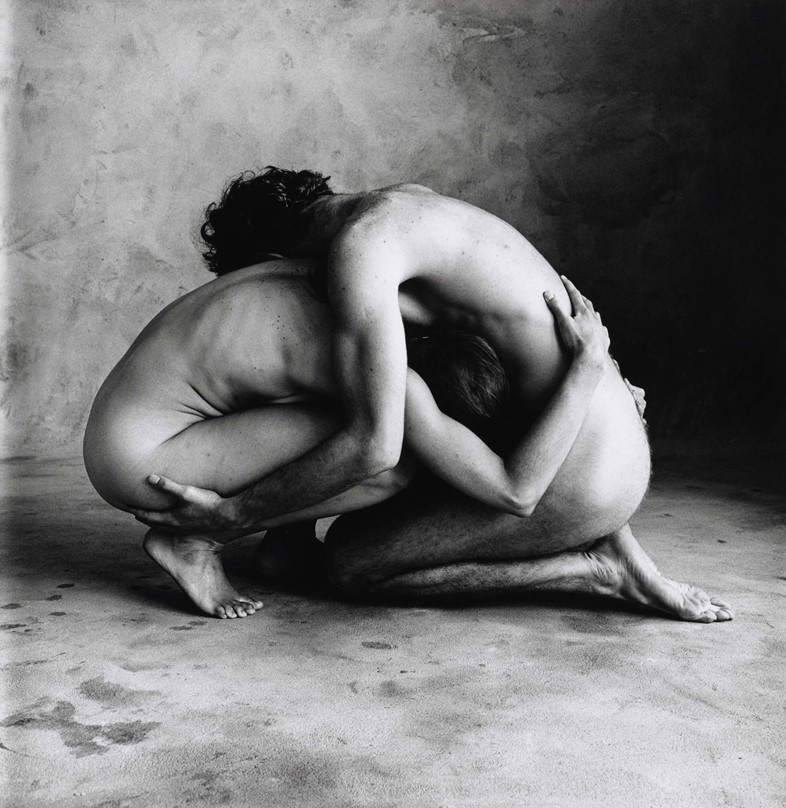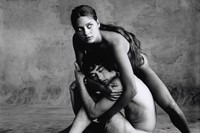A new exhibition in Paris showcases the American photographer’s portraits of the Dancers’ Workshop of San Francisco, a revolutionary 1960s collective who danced naked in public places
In 1967, the Summer of Love blossomed on the streets of San Francisco, heralding the emergence of the hippie generation. Heeding Timothy Leary’s call to “Turn on, tune in, drop out,” more than 100,000 American teens and young adults came together in the name of equal rights, ecological awareness, and higher consciousness. As the spirit of sex, drugs and rock and roll reached a fevered pitch, word of the New Left seized the imagination of youth nationwide. Keen to keep up with the times, mainstream media commissioned writers and photographers to go west in search of stories that would illuminate the heart and soul of a new counterculture.
Amid the deluge, a single photographer stood alone: the legendary Irving Penn, who sought to imbue these renegades and radicals with the same dignity he bestowed upon President John F Kennedy, Pablo Picasso and the Duchess of Windsor. He set up his studio in a barn-like building with exquisite northern light, which he used to masterfully cast painterly highlights and shadows on the hippies, Hell’s Angels, and rock stars that he photographed for Look magazine.
The series, titled The Incredibles, ran in an eight-page spread on 9 January 1968. But little did readers know something was amiss; Penn’s photographs of the Dancers’ Workshop of San Francisco had been cut from the magazine for fear their bare bodies would cause a Puritanical backlash among its readership. Although Penn showed the full series of 14 prints in 1995 they have gone largely unseen until now in the new exhibition, The Bath, at Thaddaeus Ropac in Paris.
Founded by Anna Halprin, the Dancers’ Workshop of San Francisco transformed the landscape of modern dance by introducing the healing and communal possibilities of ritual, improvisation, and body awareness. Halprin eschewed convention, preferring to collapse the space between performer and audience in non-traditional spaces. “The Dancers’ Workshop of San Francisco was very revolutionary,” says Marcus Rothe, who co-curated the exhibition with Xenia Geroulanos. “The choreography by Anna Halprin changed modern dance, more like a collective and participatory research around daily tasks and rituals, rather than a language around the beauty of gesture and movement. They performed in the US with increasing success accompanied by certain objections because they danced naked in public places, which was groundbreaking and courageous.”

In keeping with the times, Halprin staged the original performances of The Bath as happenings. Nude dancers used public fountains or performed in hallways using jugs of water, bathing one another to explore the tender space of interconnectedness through everyday acts. Penn brought the dancers to his studio where they could safely disrobe without police harassment, and set to work, crafting a series of dance photographs like no other before or since.
“Penn was a meticulous composer of images and light, with an affinity for painting and sculpture, not a reportage photographer who came in, made some shots, and left,” says Rothe. Instead, Penn worked in collaboration with Halprin to pay homage to the bath, a theme that runs from antiquity through modern art. “Penn had his own sense of composition and rhythm,” Rothe explains. “He wasn’t jumping onto the dance. There is nothing quick, superficial, or sensational. Every single photo in this series is the reflected image of the moment.”
Although Penn’s love of dance photography dates back to 1946, and remained a theme for the next half century, The Bath set itself apart from the rest. While the unnamed dancers are nude, their flesh is far from profane as Penn deftly distilled their essence in the classical spirit of Michelangelo and the ancient Greeks. Amid the primordial act of bathing, he recognised the power of connection manifested through care.

In Penn’s hands, the photographs explore the nature of touch through the act of embrace, striking the perfect balance between love and romance. “What I remember is the purity of the relationship of these young people and an innocence so different from today’s,” Penn said in 1995. “As I look at these pictures, how the dancers touch each other, how they embrace […] there’s a serenity that as a photographer I’m not used to.”
That serenity lies at the core of The Bath, and Penn’s recognition of the intricate links between the classical and avant-garde throughout the history of art. Although their delicate nudity no longer shocks, the images capture the turbulence of the era mediated by the humanism of art – a fitting metaphor for our present moment.
The Bath by Irving Penn is on show at Thaddaeus Ropac in Paris until 30 November 2023.



